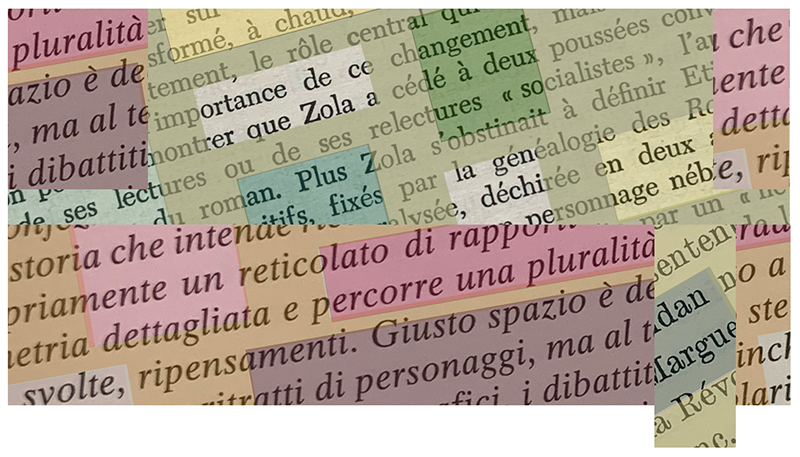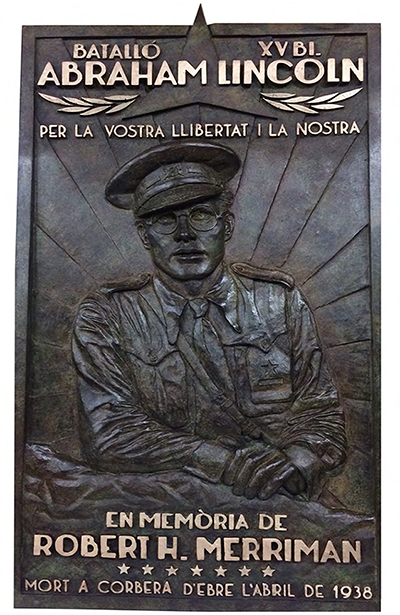International & Area Studies
Center for Research Libraries releases Soviet-Era Ukrainian Newspapers Online
Center for Research Libraries in collaboration with the Global Press Archive of East View has released its latest digital collection of select Soviet-Era Ukrainian Newspaper. The collection can be accessed here: https://gpa.eastview.com/crl/seun/ or here
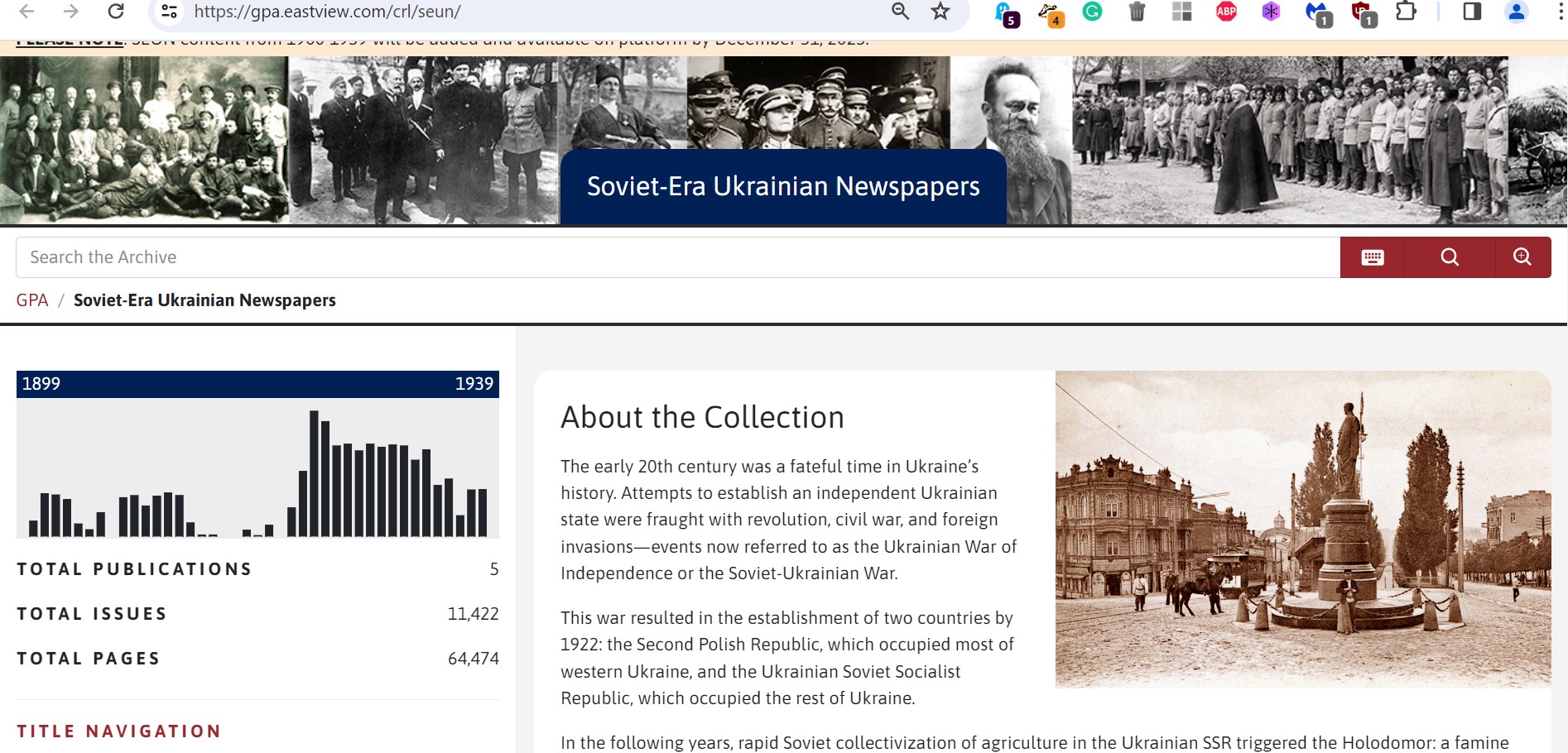
About the collection:
The early 20th century was a crucial time in Ukraine’s history, marked by attempts to establish an independent state, leading to the Ukrainian War of Independence. This conflict resulted in the creation of two countries by 1922: the Second Polish Republic in western Ukraine and the Ukrainian Soviet Socialist Republic in the rest of the country.
Following this, rapid Soviet collectivization in the Ukrainian SSR triggered the Holodomor, a famine that began in 1932 and claimed millions of lives.
The Soviet-Era Ukrainian Newspapers (SEUN) collection, with over 50,000 pages and five titles, documents Ukraine’s history during this turbulent period, including events leading up to WWII. It includes newspapers from Kyiv, Kharkiv, and Lviv, featuring content in both Ukrainian and Russian.
Revamped Guides for French/Francophone and Italian Literatures
A recent overhaul of the two literary research guides for French and Francophone Literatures and Italian Literature & Criticism first created quite a long time ago will improve navigation and discovery in these vast print collections. Over the course of the past year, we have critically reviewed the former guides, weeded outdated resources, and replaced them with more current content with links to digital resources when available.
These two literature research guides are now benefiting from the LibGuides platform, which makes it much easier to revise than the former PDFs. Each guide is structured by sections for article databases, general guides and literary histories, reference tools, poetry, theater & performance, and literary periods. They interface seamlessly with related guides published by the UC Berkeley Library. For example, on the home page of each LibGuide, there is a prominent link to the lists of recently acquired publications in both French and Italian, making it even easier to stay current on new books in any particular call number range.
Because the guides are much easier to update, they encourage user interaction and invite community suggestions for inclusion (or deletion).
If you have time over the winter break, please take a whirl and let us know what you think. We’ll be unveiling a similar guide for Iberian Literatures & Criticism this spring!
Celebrating more than 150 years of World Languages at Berkeley
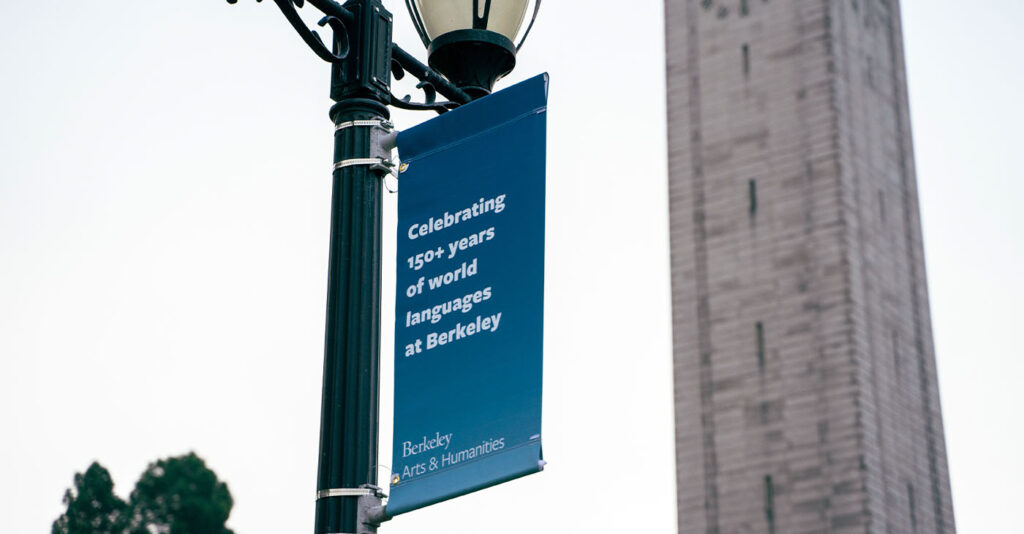
New banners celebrate 150+ years of Berkeley’s prominence in teaching world languages
At least 60 languages — from Mongolian and Old Norse to Polish, Catalan, Ancient Egyptian, Arabic and Biblical Hebrew — are taught at UC Berkeley, one of the nation’s top institutions for the breadth and depth of its world languages program. A growing emphasis also is being placed at Berkeley on revitalizing and preserving endangered languages, most of them spoken by Indigenous peoples.
To help honor more than 150 years of global languages at Berkeley, 63 colorful banners will begin flying throughout campus today, and for the next 18 months, that feature facts about the campus’s language programs, as well as 21 bilingual and multilingual faculty members, students and alumni.
Among the messages on the banners:
- Collectively, undergraduates at UC Berkeley speak more than 220 different first languages.
- More than 500 language learning classes are taught at Berkeley annually.
- More than 6,000 Berkeley students enroll in those classes each year.
- In 1872, the first endowed chair in the UC system was created — for the study of East Asian languages at Berkeley.
- Students at all UC campuses can take online African language classes at Berkeley, which is well-known for Amharic, Igbo and Swahili instruction.
Reposted from Berkeley Letters & Science 10/25/23
See also: https://artshumanities.berkeley.edu/celebration-world-languages-uc-berkeley
Sovetskii Ekran (Soviet Film) Digital Archive at UC Berkeley Library
The Library has purchased the Digital Archive of a Soviet film magazine: Sovetskii Ekran. The archive provides access to the full-text of journal issues that were published from 1925-1998.
Below is the screenshot of the landing page of the Sovietskii Ekran.

At the time of writing this blog, the digitization of issues was completed through 1970 and the additional digitization was in progress.
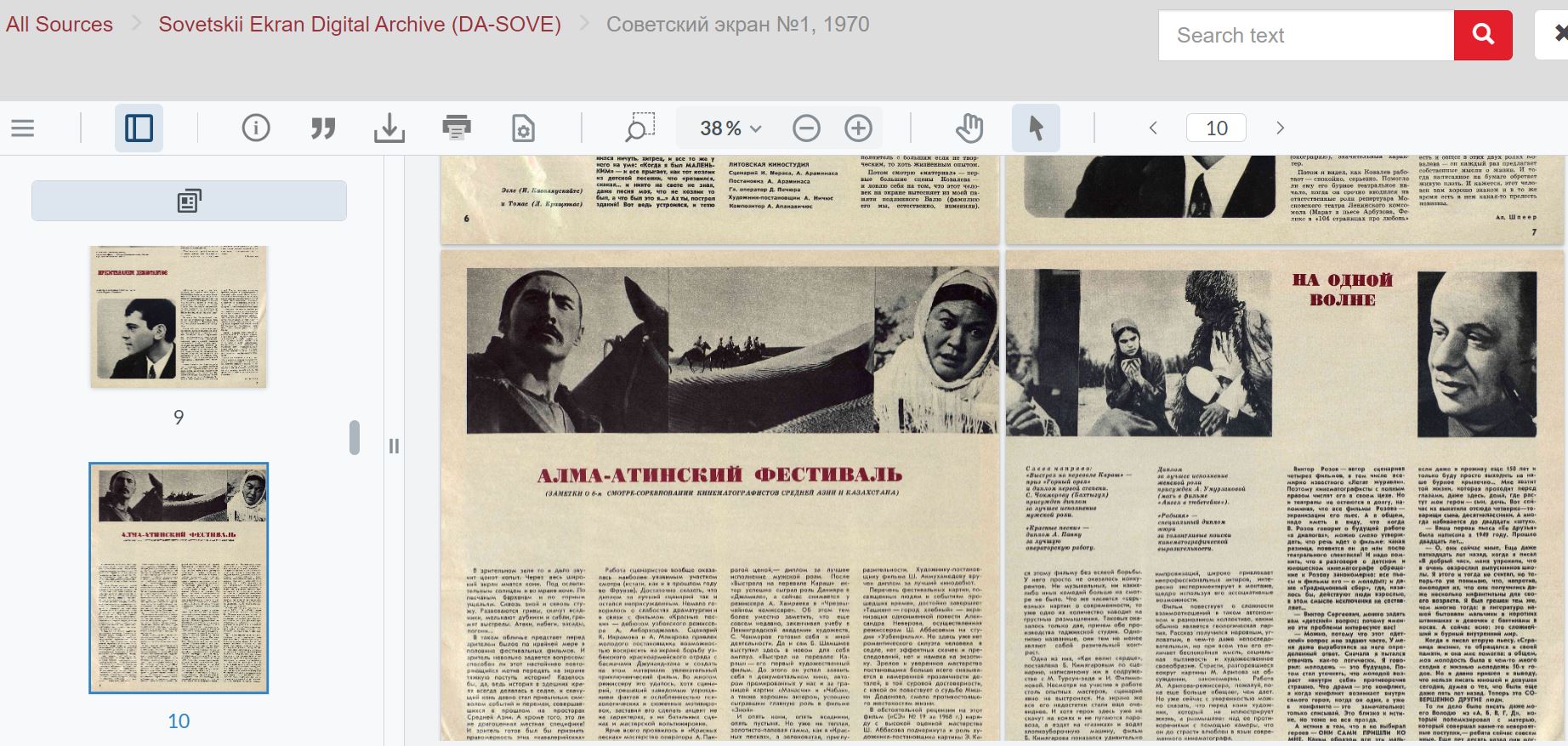
About the journal:
Soviet Screen was a magazine in the USSR that ran from 1925 to 1998 (with a break from 1941 to 1957). It talked about movies, both from the Soviet Union and other countries, cinema history, and had articles critiquing films. They also had reader polls each year to pick the best film, actor, actress, film for children, and music film.
The magazine had different names over the years, like Screen Film Gazeta in 1925, Cinema and Life in 1929–1930, Proletarian Cinema from 1931–1939, and Screen from 1991–1997. Before 1992, it was connected to the Union of Cinematographers of the USSR State Committee for Cinematography and the USSR.
In 1984, they printed 1.9 million copies. In 1991, the editor was Victor Dyomin, and the magazine was published under the title: Screen. It started coming out less often, monthly instead of more frequently. It kept going as Screen Magazine until 1997, then for a few months in 1997-1998, it went back to its old name-Soviet Screen. But it couldn’t survive the financial troubles in 1998 and had to stop publishing (Source: Wikip.).
Library Trial: Znamia Digital Archive (Soviet-era periodical)
At the library, we have set up a thirty-day trial of Znamia Digital Archive through November 18, 2023.
The extensive archive of Znamia (Знамя, Banner), a highly regarded Soviet/Russian “thick journal” (tolstyi zhurnal), covers more than nine decades and is a rich source of intellectual and artistic contributions. This monthly publication has been a vibrant platform for literature, critical analysis, philosophy, and, at times, political commentary.
Originally introduced in January 1931 as LOKAF (Локаф), an acronym for the Literary Association of the Red Army and Navy, the journal officially adopted the name Znamia, which translates to “Banner” in English, in 1933. Throughout its history, Znamia has played a crucial role in presenting the works of renowned authors such as Anna Akhmatova, Alexander Tvardovsky, Yevgeny Yevtushenko, Konstantin Paustovsky, Yuri Kazakov, and Yuri Trifonov.
During the era of Perestroika, starting in 1986, Znamia underwent a significant transformation and became one of Russia’s most widely read literary journals, serving as a herald of the Perestroika movement.
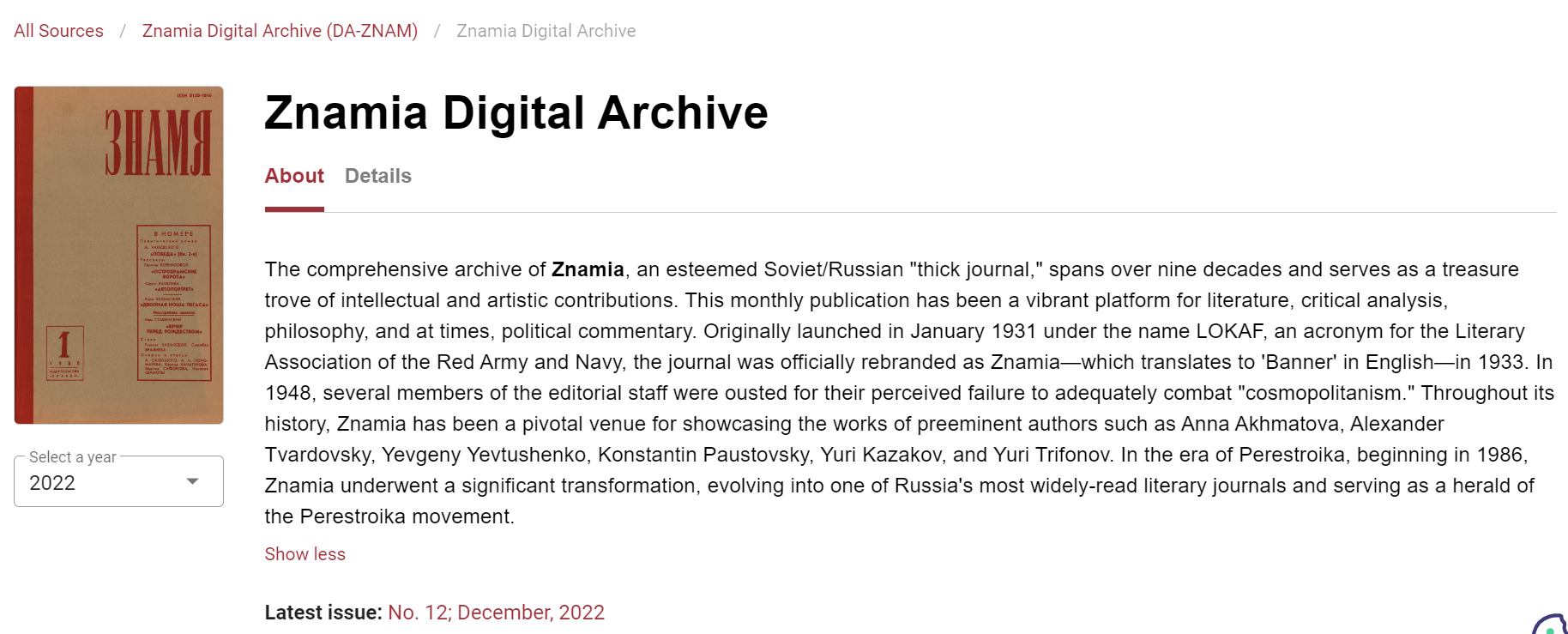
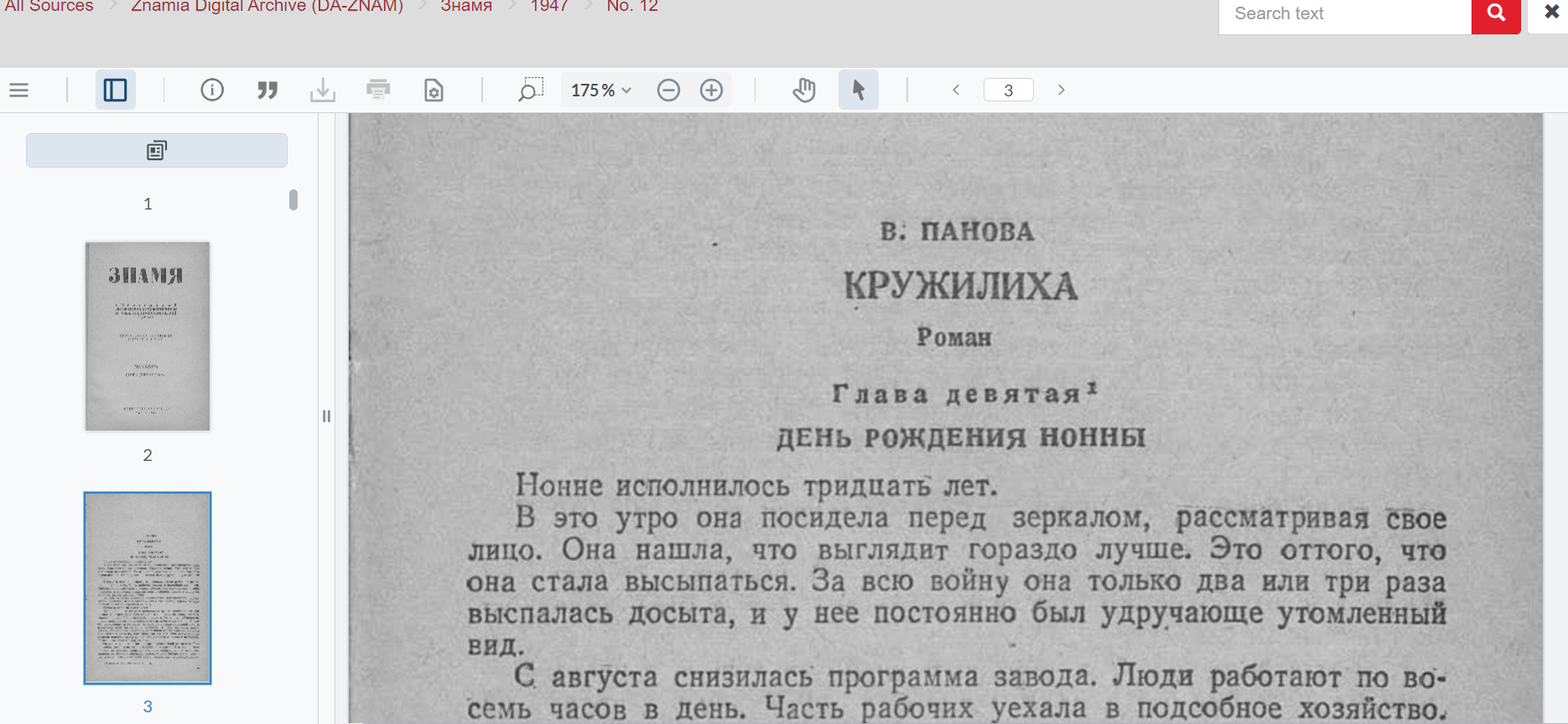
Access Link: https://libproxy.berkeley.edu/login?qurl=https%3A%2F%2Fdlib.eastview.com%2Fbrowse%2Fudb%2F6250
Robert H. Merriman Plaque online kick-off event 10/3/23
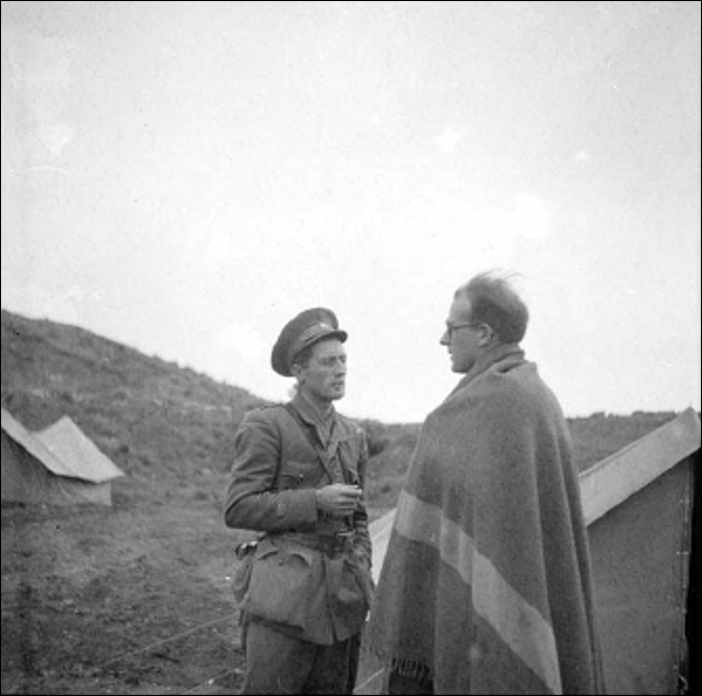
Please join us in celebrating the memory of the UC Berkeley graduate student in economics, who gave his life fighting fascism in Spain as a member of the Abraham Lincoln Brigade.
Remembering Robert H. Merriman (1908-1938):
From Berkeley to the Trenches of the Spanish Civil War
Tuesday, October 3, 2023
6:00 PM – 7:00 PM Pacific (PST)
Online event (registration required)
The University of Barcelona’s DIDPATRI research group has offered UCB a second casting of the commemorative plaque that stands today in the village where it is believed that Merriman was held and then executed by the fascists. We are launching a fundraiser to cover the costs of its installation at the center of campus near Memorial Glade, which honors UC Berkeley veterans of World War II.
This memorial will contribute to the educational mission of the University as a readily accessible stop for campus tours, as well as a relatable point of reference for interdisciplinary classes touching on twentieth century history. Its location near The Bancroft Library, where the Bay Area Veterans of the Abraham Lincoln Brigade Post Records are archived, will also call attention to the research opportunities available there. These records were donated by Merriman’s widow, Marion Merriman Wachtel, who accompanied him in Spain where she was also a member of the Abraham Lincoln Brigade.
Project sponsored by the Department of Spanish & Portuguese at UC Berkeley.
For more information or to make a donation, please visit ucblib.link/robert-merriman.
Celebrate print and more this Bibliodiversity Day!
Bibliodiversity Day was created in 2010 by Latin American publisher members of the International Alliance of Independent Publishers, a professional collective that brings together more than 800 independent publishing houses from over 55 countries around the world.
Since then, the event has taken place every year, especially in Latin America where the term “bibliodiversidad” was first coined. On September 21, the first day of spring for the southern hemisphere, publishers, booksellers, book professionals and readers are invited to celebrate independent publishing and bibliodiversity.
Bibliodiversity is the response to the huge imbalance in the publishing market, where commercial logic vastly prevails over intellectual adventurousness, characteristic of small, independent, or unconventional publishers. For academic libraries, the imbalance between commercial and independent publishers is further exacerbated by institutional preferences for digital over print. Faced with the continued prevalence of print publishing in most regions of the world (including Europe), the spectrum of viewpoints collected and preserved by academic libraries risks becoming impoverished without the conscious intervention of librarians and book dealers in charge of such curatorial decisions.
With that here are a few recent acquisitions to showcase from the Romance languages collection on this day of bibliodiversity:
Atzeni, Paola. Corpi, gesti, stili : saper fare e saper vivere di donne eccellenti nella Sardegna rurale. Nuoro: Illisso, 2022.
Ayroles, François. En terrasse. Paris: L’Association, 2019.
Bekri, Tahar. Chants pour la Tunisie. Neuilly-sur-Seine: Al Manar, 2023.
Cruanyes Plana, Toni. La Vall de la Llum. Barcelona: Destino, 2022.
Dumas, Catherine. Salette Tavares, Obra Poética 1957-1992. Imprensa Nacional-Casa da Moeda, 2022.
Hernando, Almudena. La corriente de la historia : (y la contradicción de lo que somos). Primera edición. Madrid: Traficantes de sueños, 2022.
Junyent, M. Carme. El futur del català depèn de tu. Barcelona: La Campana, 2022.
Kanapé Fontaine, Natasha. Nauetakuan. [New edition]. La Roche-sur-Yon: Dépaysage, 2023.
Sánchez Soler, Mariano. Una hojarasca de cadáveres : crónica criminal de la España posfranquista. Primera edición. Barcelona: Alrevés, 2023.
Lugassy, Maurice. Les Justes en Occitanie : cette page de lumière dans la nuit de la Shoah. Toulouse: Privat, 2023.
Mak-Bouchard, Olivier. La ballade du feu. Paris: Le Tripode, 2023.
María, Daniel. Bisutería auténtica. Barcelona: Egales, 2023.
Migneco, Giulia. Donne e antimafia. Ed. Valeria Scafetta. Padua: BeccoGiallo, 2022.
Ondjaki. Vou mudar a cozinha : contos. 1a edição. Alfragide – Portugal: Caminho, 2022.
El Moumni, Salma. Adieu Tanger : roman. Paris: Bernard Grasset, 2023.
Previtali, Enrico, Elena Ravera, and Stefano Rozzoni, eds. “Nuovi fascismi e nuove resistenze : percorsi e prospettive nella cultura contemporanea.” Ospedaletto (Pisa): Pacini editore, 2022.
Scotti Morgana, Silvia, ed. La letteratura dialettale milanese : autori e testi. Roma: Salerno editrice, 2022.
Sonko, Seynabou. Djinns : roman. Paris: Bernard Grasset, 2023.
And remember, new acquisitions lists are running again for print titles in French, Italian, and Iberian Studies. Check them out!
Third annual Hispanic Heritage Month Celebration Webinar at UC Berkeley Library
- Sarah Aponte; Chief Librarian, Dominican Studies Institute, CUNY
- Dr. Irma Guadarrama, former professor/ researcher and writer at Houston University–author of a 2023 book, “To Change the Impossible World: Central American Women in Struggle and Resistance.”
- Kathia Salome Ibacache, Librarian for Romance Languages
- David Woken, Latin American and Caribbean Studies Librarian, University of Chicago
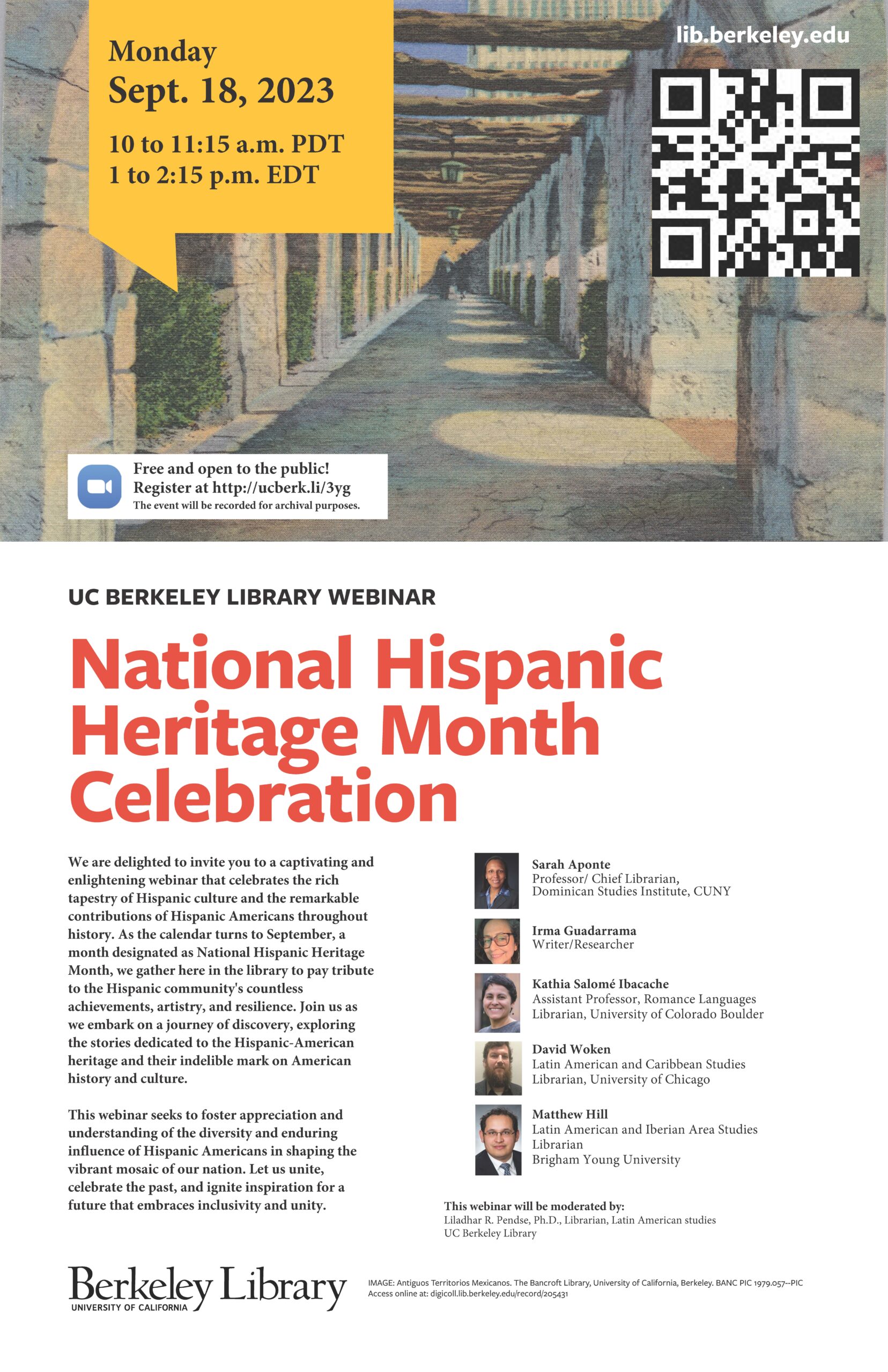
National Hispanic Heritage Month Celebration Webinar 2023 at UC Berkeley Library
Prensa Libre (Guatemalan Newspaper) Archive Trial at UC Berkeley Library
The Library has started a thirty-day trial of Prensa Libre Newspaper. One can access the resource by authenticating from an off-campus location using the following hyperlink: https://libproxy.berkeley.edu/login?qurl=https%3A%2F%2Fgpa.eastview.com%2Fpren%2F
Currently, the full-text content is available for the issues starting in 1980 through 2022.
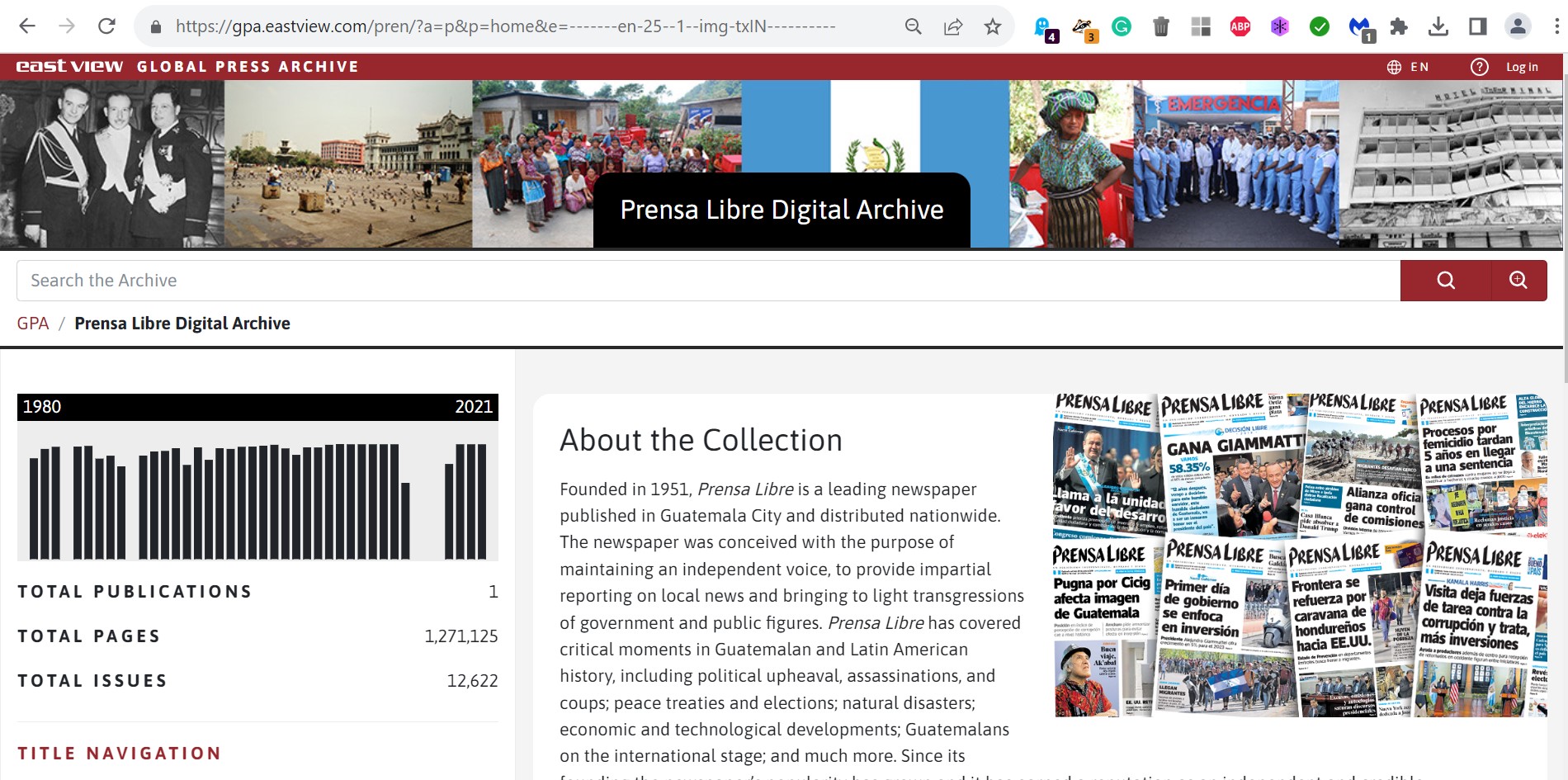
Prensa Libre fue fundado el 20 de agosto de 1951 por Pedro Julio García, Álvaro Contreras Vélez, Salvador Girón Collier, Mario Sandoval Figueroa e Isidoro Zarco Alfasa.
Prensa Libre is a Guatemalan newspaper published in Guatemala City by Prensa Libre, S.A. and distributed nationwide. It was formerly the most widely circulated newspaper in the country and as of 2007 it has the second-widest circulation.[1] It is considered a local newspaper of record. It was founded in 1951. (Source: Wikipedia)
In memoriam: Dr. Richard Hovannisian (UCLA)–Obituary by Professor Bedros der Matossian
Today Milan Kundera passed, and the whole literary world grieved; likewise, I grieved. I often ask myself why some deaths get marked albeit more while the others, such as those of migrants who drowned on their way to Europe or the Honduran female inmates who were killed in prison, were forgotten by many.
I believe life and death are part of being human or animate. When I heard the news of passing Professor Richard Hovannisian of Armenian History at UCLA yesterday, I grieved. In the Winter of 2002, when many of the UCLA classes were full and as a transfer student-immigrant, I had no idea what class in History I should enroll in as UCLA felt like an Indian jungle; Professor Hovanissian came out of new and suggested, I take his class on Armenian History. He also mentioned that although his class was full, he would gladly have an extra-Indian voice. I am forever grateful to him for admitting me to a course that opened the door to a new cultural, civilizational, and linguistic experience. His teaching style and compassion have remained with me to this day, for he was my first university professor. He was always supportive of my work as a professional librarian at UCLA. We have all his books
RIP Professor Hovannisian
Here is the obituary Professor Bedros de Matossian wrote on the Society of Armenian Studies email list.
“On July 10, the Society for Armenian Studies, the academic world, the field of Armenian Studies, and the Armenian nation lost one of the most prominent icons of the modern period: Prof. Richard G. Hovannisian (1932-2023). Hovannisian was a monumental figure in the field of Armenian Studies. Considered as the Dean of Modern Armenian History, he established the field of Modern Armenian History in the Western Hemisphere. He supported the establishment of some of the most important chairs in Armenian Studies in the United States. Hovannisian was the child of Genocide survivors. His father, Kaspar Gavroian, was born in in the village of Bazmashen near Kharpert in 1901. Unlike others, he survived the Genocide and arrived in the U.S. He changed his last name from Gavroian to Hovannisian after his father Hovannes. In 1928 Kaspar married Siroon Nalbandian, the child of Genocide survivors. They had four sons: John, Ralph, Richard, and Vernon. Richard was born in Tulare, California, on November 9, 1932. Being the son of Genocide survivors played an important role in his academic path. In 1957, he married Dr. Vartiter Kotcholosian in Fresno and had four children: Raffi, Armen, Ani, and Garo. Raffi would become the first Minister of Foreign Affairs (1991-1992) of the Modern Republic of Armenia.
Hovannisian began his academic life in 1954 by earning a B.A. in History, followed by an M.A. in History from the University of California, Berkley. In 1966, he earned his Ph.D. from the University of California, Los Angeles (UCLA). His dissertation was published in 1967 with the title Armenia on the Road to Independence which was the precursor to the four-volume magnum opus The Republic of Armenia. Hovannisian played an important role in establishing the teaching of Armenian history at UCLA. In 1987, he became the first holder of the Armenian Education Foundation Chair in Modern Armenian History at UCLA, which after his retirement was named in his honor as the Richard Hovannisian Endowed Chair in Modern Armenian History, with Prof. Sebouh Aslanian as its first incumbent.
Hovannisian was a Guggenheim Fellow and received numerous prestigious national and international awards for his service to the field and civic activities. He served on the Board of Directors of multiple national and international educational institutions and was a member of the Armenian National Academy of Sciences. After finishing his four-volume The Republic of Armenia, he dedicated his research and career to battling the denial of Armenian Genocide, resurrecting the history of Armenian towns and villages of the Armenian Provinces of the Ottoman Empire, and writing textbooks on modern Armenian history. Although not a scholar of Armenian Genocide, he has contributed more to the discipline than many others in the field. He edited multiple volumes on different facets of the Armenian Genocide, including historical, literary, and artistic perspectives. Hovannisian also spearheaded a monumental project to preserve the eyewitness accounts of the Armenian Genocide survivors.
In the 1970s, he launched the Armenian Genocide oral history project. He and his students interviewed more than 1,000 Armenian Genocide survivors in California. In 2018, Hovannisian donated the collection to the USC Shoah Foundation’s Visual History Archive to be available to scholars around the world. He single-handedly edited and published 15 volumes with Mazda Press as part of the UCLA Armenian History & Culture Series. The 15 volumes covered the history of Armenians in Van/Vaspourakan, Cilicia (with Simon Payaslian), Sivas/Sepastia, Trebizond/Trabzon, Baghesh/Bitlis, Taron/Mush, Smyrna/Izmir, Kesaria/Kayseri and Cappadocia among other places. The final book in the series, The Armenians of Persia/Iran, was published in 2022. Hovannisian’s also edited the two-volume The Armenian People from Ancient to Modern Times, which is considered a classic Armenian History textbook.
Hovannisian came from a generation that fought against the stifling of Armenian voices within the fields of Middle Eastern and Ottoman Studies, which had relegated Armenian Studies to second-class status. He fought for the relevance of Armenian Studies within these fields and tirelessly fought against the efforts to marginalize Armenian issues and to deny the Armenian Genocide.
Besides his contribution to the field, Hovannisian also mentored and educated multiple generations of scholars and thousands of students. He was a strict mentor who demanded that his students work to reach their full potential. He wanted to make sure that they would survive and thrive in the tough terrain of the academic job market.
In his lifetime, Hovannisian was especially influenced by two people: his wife Vartiter and Simon Vratsian (the last Prime Minister of the First Republic of Armenia). Vartiter was his life’s partner for more than half a century. Her dedication to Richard and the field of Armenian Studies played an important role in shaping who Richard became. Vartiter was an intellectual companion who read and reviewed every piece that he wrote. She was also a constant presence at every conference he planned or attended. In the early 1950s, Vratsian, the author of a major book on the First Republic, became Hovannisian’s mentor when he studied Armenian language at the Hamazkayin Nishan Palanjian Jemaran in Beirut, Lebanon. This influence led Hovannisian to write the first academic work on the First Republic of Armenia and created the first step for his academic career.
In 1974, Hovannisian along with Dickran Kouymjian, Nina Garsoïan, Avedis Sanjian, and Robert Thomson spearheaded the project to establish a Society for Armenian Studies (SAS). Considered as the pillars of Armenian Studies, the main objective of this group was the development of Armenian Studies as an academic discipline. With access to very limited resources, this group of scholars was able to establish the foundations of a Society that would play a dominant role in developing Armenian Studies in North America and beyond. From a handful of chairs and programs that supported the initiative at the time, today Armenian Studies as a discipline has flourished in the United States with more than thirteen chairs and programs providing their unconditional support to the Society. Hovannisian was the president of SAS for three terms (1977, 1991-1992, 2006-2009). During his tenure the Society flourished and achieved major accomplishments in the field.
In 2019, the Society for Armenian Studies awarded Hovannisian with the SAS Life Time Achievement Award in recognition and appreciation for his outstanding service and contribution to the field of Armenian Studies.
Hovannisian’s legacy will remain for generations to come.
Our hearts go out to his family and beloved ones.
Obituary by Bedross Der Matossian
Past President of SAS (2018-2022)
University of Nebraska, Lincoln”
